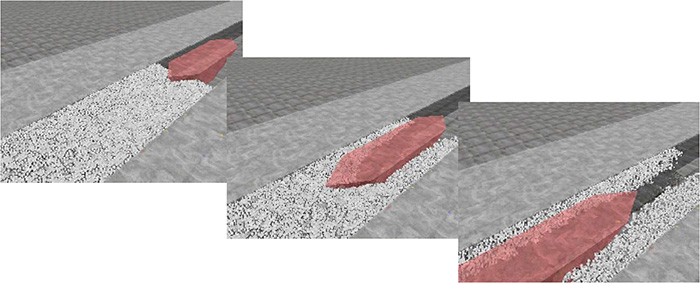Research Project (7)
Projection of sea ice distribution and Arctic sea routes
Principal Investigator: Koji Shimada (Tokyo University of Marine Science and Technology)
Sub-Research Project b
Sea ice prediction and construction of an ice navigation support system for the Arctic sea routes
Principal Investigator: Hajime Yamaguchi (The University of Tokyo)

Outline
We are conducting research in four themes to create a forecasting system and decision-making standards needed for the use of the Arctic sea routes.
1. Forecasting the distribution of sea ice: We are establishing methods to make short-term forecasts (up to 10 days in advance) to assist the navigation of vessels in the Arctic Ocean, and medium-term forecasts (looking several months ahead) to help determine whether or not the sea lanes will be navigable, and if so, then for how long. The shortterm forecasts use a high-resolution ice/ocean coupled numerical model that has been developed and used for the Sea of Okhotsk. The medium-term forecasts use a statistical model based on the analysis of satellite data to determine trends in the sea ice over a longer period.
2. Monitoring the ice conditions around shipping lanes: We are establishing methods to monitor the ice, in particular ice thickness, using satellitebased remote sensing. Based on the ice condition data that is obtained, we will develop navigation techniques that can be used to select suitable routes, for use in ice-covered waters.
3. Understanding the effects on vessels navigating through icy waters: We are assessing the impact force and safety aspects when ice blocks strike the hull of a vessel. We are also developing techniques to predict and reduce icing on ships that can lead to accidents.
4. Assessment of economic viability: We will propose shipping scenarios that take technology and economy into consideration.
By gathering together these results, we are developing a "navigation support system" so that we can decide whether or not shipping routes through the Arctic Ocean can be used, and also to use these routes more efficiently. This research is contributing to the achievement of strategic research target ④ Projection of sea ice distribution and Arctic sea routes.

Assessment of the ice load on the ship hull. This model can involve around 100,000 virtual ice pieces and can analyze the mutual interaction between these pieces and a ship hull, as well as the ice load.
(Source: Prof. Akihisa Konno, Kogakuin University)

